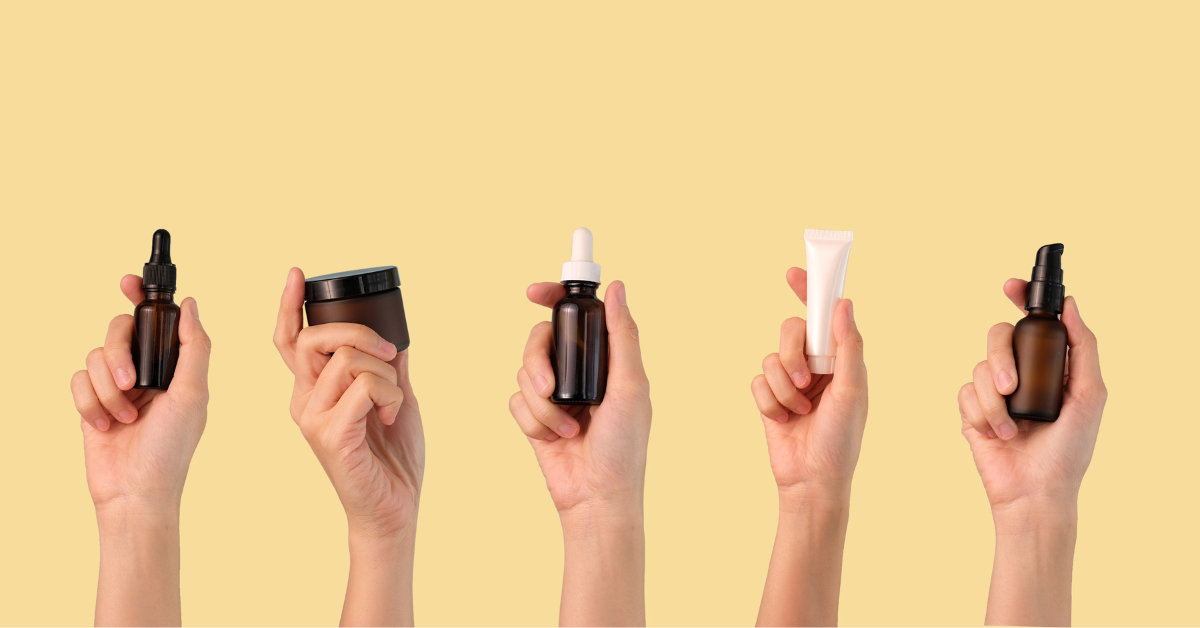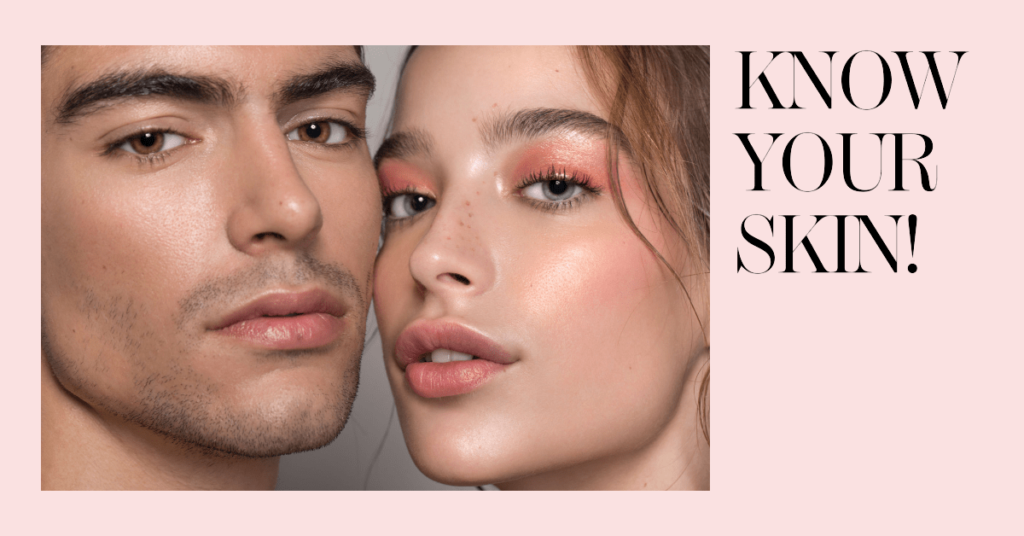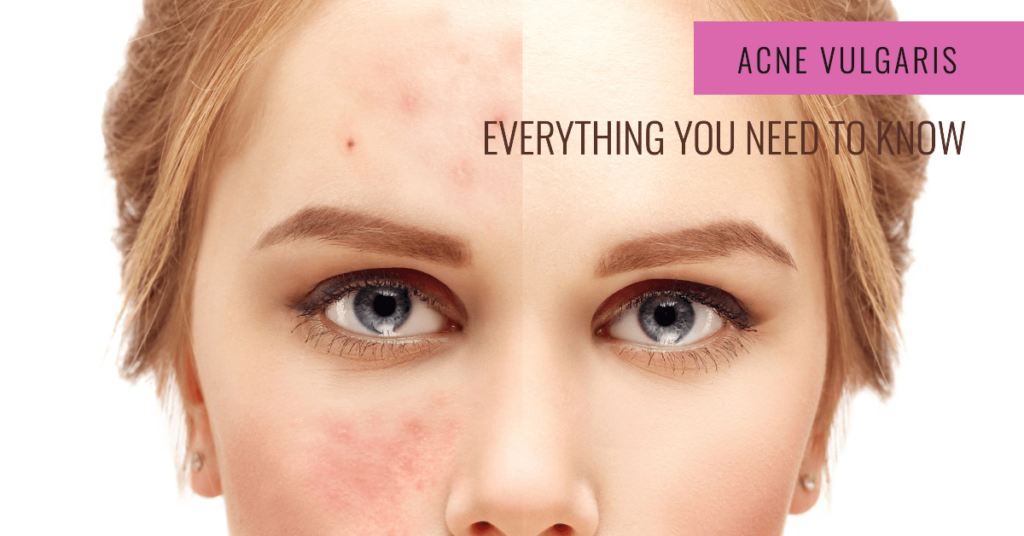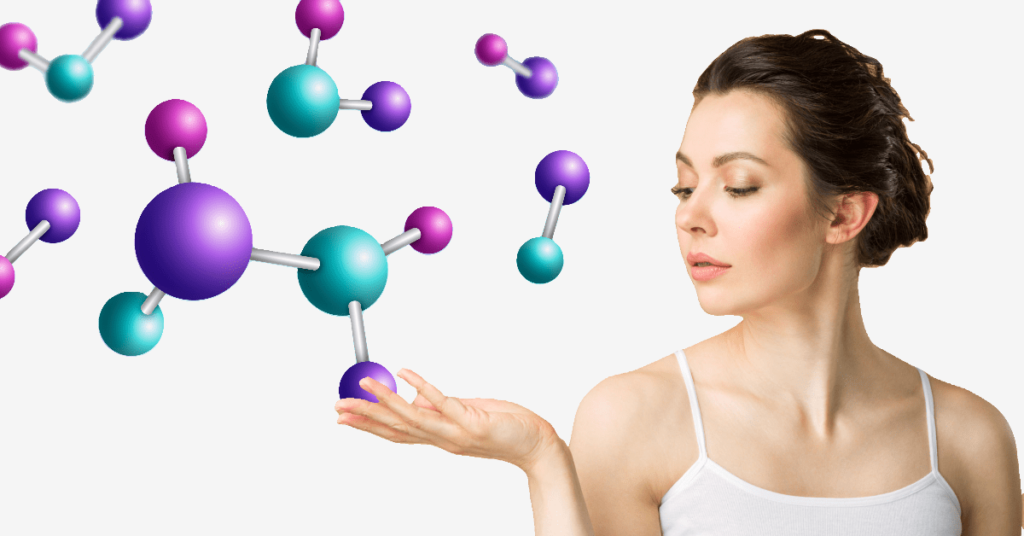Every Active Ingredient that is there in your skincare products has a role to play. These ingredients help you fix a specific issue about your skin. While some can help you get rid of acne, pimples or hyperpigmentation, others can provide moisture to your skin, making it look more supple and healthy.
Most of these active ingredients have been scientifically proven to offer benefits. There’s no doubt about it. Ingredients like:
- Retinol (Vitamin A): Boosts collagen production and reduces wrinkles.
- Vitamin C: Brightens skin and neutralizes free radicals to prevent aging.
- Hyaluronic Acid: Deeply hydrates and plumps the skin by retaining moisture.
- Niacinamide (Vitamin B3): Improves skin barrier function and evens skin tone.
- Salicylic Acid: Exfoliates the skin and clears acne by unclogging pores.
- Peptides: Stimulate collagen production and improve skin elasticity.
- Alpha Hydroxy Acids (AHAs): Exfoliate and renew skin, improving texture and radiance.
- Ceramides: Strengthen the skin’s barrier and lock in moisture.
- Zinc: Reduces inflammation and regulates oil production to combat acne.
- Sunscreen (SPF): Protects the skin from harmful UV rays and prevents sun damage.
These ingredients do provide specified benefits, if they are actually present in your skincare products.
Assuming these ingredients are present in your skincare products in a suitable strength, do you think you can get the most out of these when applied?
Well, not really.
Most people simply just throw these products on to their skin, expecting the result and get disheartened or blame the product itself. (Yes, blaming products is a logical thing to do in today’s scenario. YKWIM)
But is there a way to get the most out of these products? Well, yes. It’s possible and that is by applying these products in your skincare routine in such a way that no product diminishes the effectiveness of another product and the correct sequence ensures maximum absorption, allowing each step to deliver its intended benefits.
Instagram View @xGloe

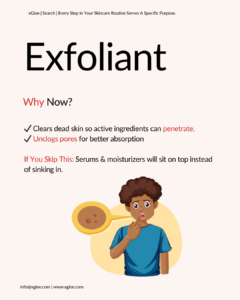




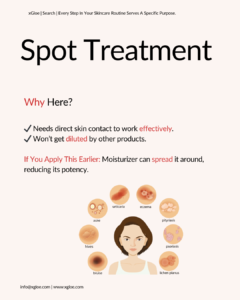
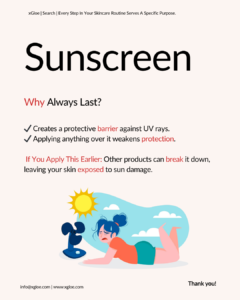

For your convenience, I’ve provided the logical sequence of all the essential steps in an effective skincare routine.
Step 1: Cleanser – Starting with a Clean Slate
Before anything else, cleansing your face is the first and most crucial step. Throughout the day, dirt, excess oil, and pollutants accumulate on your skin, which can clog pores and reduce the effectiveness of other products.
Why is this necessary?
- Removes dirt, sweat, and product buildup.
- Prepares skin for better absorption of active ingredients.
Why First?
Applying skincare on unclean skin reduces its effectiveness, as dirt and oil create a barrier that prevents absorption.
Step 2: Exfoliant (2-3x per week) – Removing Dead Skin Cells
Exfoliation is not a daily necessity, but when done a few times a week, it helps unclog pores, promote cell turnover, and enhance product absorption.
Why is this necessary?
- Clears away dead skin and unclogs pores.
- Allows deeper penetration of serums and moisturizers.
Why Here?
Removing the top layer of dead skin ensures that active ingredients in the following steps can work more efficiently.
Step 3: Toner – Prepping for Better Absorption
Toner is often overlooked, but it plays an important role in prepping the skin after cleansing. It restores the skin’s natural pH and enhances the penetration of serums and moisturizers.
Why is this necessary?
- Balances skin’s pH after cleansing.
- Hydrates and enhances absorption of serums/treatments.
Why Here?
Think of toner as a primer—it prepares the skin to soak up all the goodness from serums and moisturizers.
Step 4: Serum – Delivering High-Potency Ingredients
Serums are concentrated treatments designed to target specific skin concerns such as hydration, brightening, anti-aging, or acne. Their lightweight consistency allows them to penetrate deep into the skin.
Why is this necessary?
- Packed with active ingredients for targeted treatment.
- Lighter than moisturizers, so they absorb quickly.
Why Here?
Applying serums before heavier creams ensures they penetrate effectively without being blocked.
Step 5: Moisturizer – Locking in Hydration
Moisturizers are essential for sealing in hydration and strengthening the skin’s protective barrier. They ensure that all previously applied products remain effective.
Why is this necessary?
- Creates a protective layer that prevents moisture loss.
- Seals in benefits of serums and treatments.
Why Now?
Moisturizers act as a final barrier, locking in all hydration and nutrients from previous steps.
Step 6: Facial Oil (Optional) – Sealing Everything In
Facial oils are great for providing extra nourishment, especially for dry or dehydrated skin. However, they should be used after moisturizers to prevent blocking lighter products.
Why is this necessary?
- Provides extra nourishment for dry skin.
- Forms an occlusive layer to prevent moisture loss.
Why Here?
Oils are thick and sit on top of the skin. If applied before lighter products, they can hinder absorption.
Step 7: Spot Treatment (If Needed) – Targeting Skin Concerns
Spot treatments are designed to target acne, pigmentation, or other concerns. Since they require direct contact with the skin, they should be applied at the right stage.
Why is this necessary?
- Treats acne, pigmentation, or dark spots
Why Here?
Spot treatments work best when applied after moisturizing and before facial oil to prevent dilution.
Step 8: Sunscreen (Morning Only) – The Most Important Step!
Sunscreen is the last step in a morning routine and arguably the most important. UV damage accelerates aging, causes hyperpigmentation, and increases the risk of skin cancer.
Why is this necessary?
- Shields skin from UV rays, aging, and hyperpigmentation
Why Last?
Sunscreen forms a protective barrier. Applying it before other products could dilute its effectiveness.
Conclusion
Following the correct order of skincare application ensures that each product works optimally. Whether you’re focusing on hydration, anti-aging, or acne treatment, layering products in the right sequence enhances absorption and maximizes results.
